We paddle out towards the reef. The fishermen race each other as we go, their outrigger canoes — each carved from a single tree trunk — bouncing along easily in the waves. We stop when we reach a patch of luminous turquoise water marked by a white post rising above the surf: the tambu area. The men peer over the sides, talking rapidly in Pidgin. Then one of them dives below.
Watching from above, we see his shadow swim down towards the bottom, searching. Almost immediately he turns around, breaking through the surface with a wide grin and whoops of joy. In his hands is a massive, mottled sea cucumber, held high above the waves for all to see.
Overfishing forced Papua New Guinea to close its sea cucumber fishery for nearly a decade. As the harvest resumes, a tribal network here on Manus Island is taking sustainable management into their own hands.
On Faraway Islands
I strap on my own mask and fins and tip over into the blue. These South Pacific seas are as warm and clear as a swimming pool. A dozen outriggers float above me, silhouetted against the bright equatorial sun, while the white, sandy bottom 20 meters below is strewn with bright orange starfish.
Another splash, and to my left a fisherman dives in, holding a thin cord tethered to his canoe. I watch as more than a dozen men dive down, again and again, retrieving one or two sea cucumbers each time. They hand one to me; it resembles a flat-bottomed American football, with splotchy brown and white markings and two lines of nipple-like spurs along the sides. The smooth, firm flesh curls around my hand, leaving behind the imprint of my fingers.
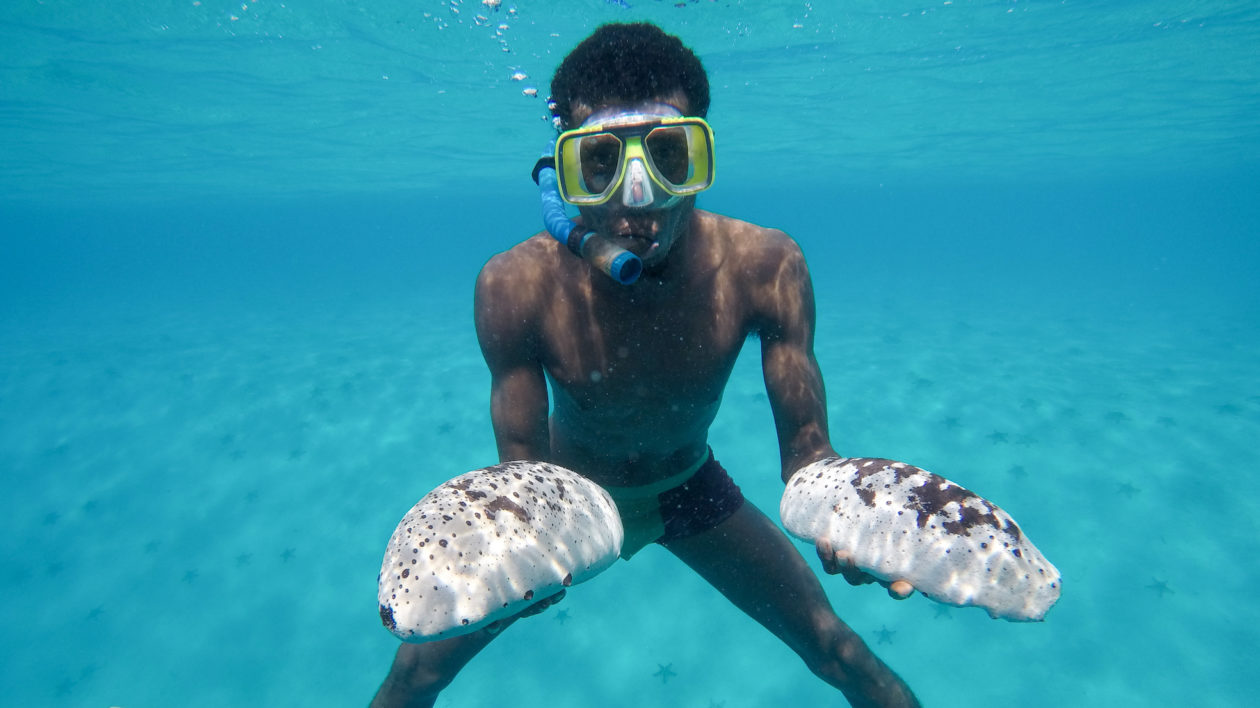
These strange, lumpy animals are vital to the people in Manus, a small volcanic island more than 200 miles north of mainland Papua New Guinea. The fishermen swimming below me are from Mbuke, one of a few dozen small communities along the southern coast that form the Mwanus Endras Tribal Network (MENAR).
Established in 2013, the network brings together nearly 10,000 people across 2.4 million hectares of seascape to sustainably manage their marine resources. “The people within MENAR are saltwater people, they rely heavily on the sea, to the point that if their fish stocks collapse it would be a catastrophe,” says Pete Waldie, a coastal fisheries scientist with The Nature Conservancy’s Melanesia program.
With the help of TNC, MENAR mapped their entire seascape and established protected areas to safeguard key habitat for important fish species and other marine resources. But for Melanesians looking to supplement their fishing income, the key species is the dumpy, unassuming sea cucumber trundling along the seafloor below us.
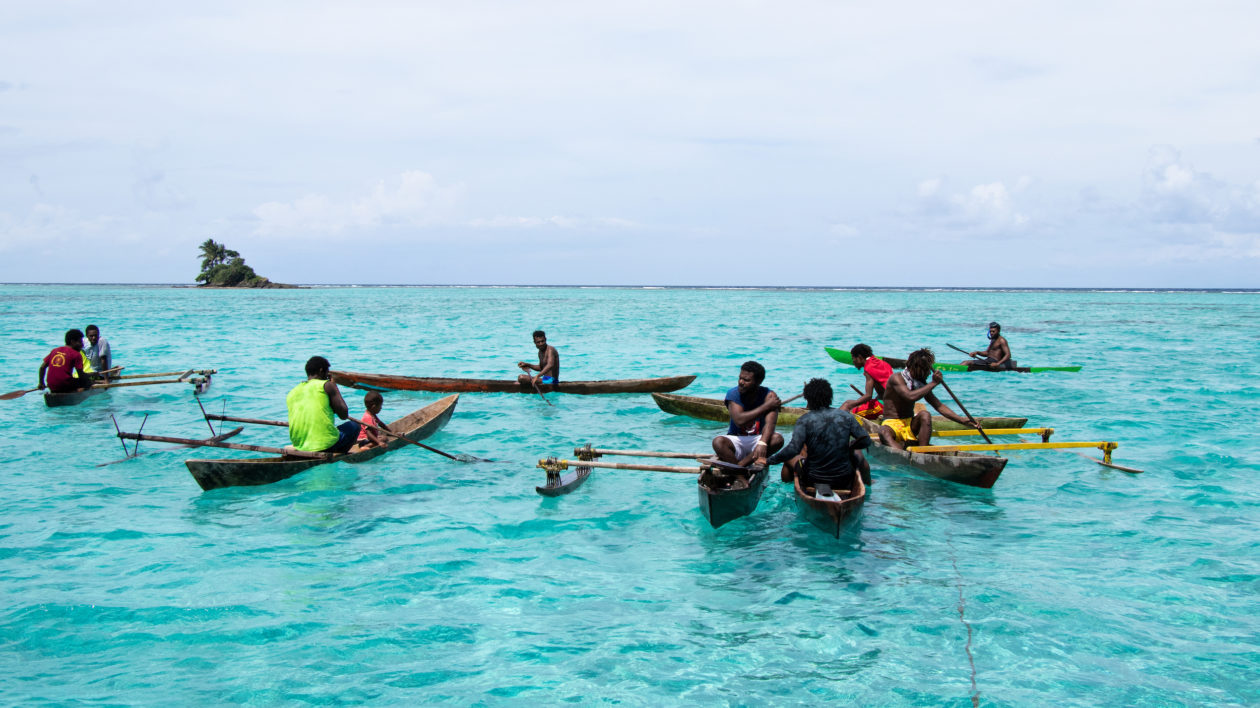
Uncharismatic Megafauna
Found across the world’s oceans, sea cucumbers are related to other invertebrates like sea urchins and sea stars. With the body plan of a boring vegetable, they’re little more than mobile intestines.
As we hang on the side of a canoe, Waldie flips the sea cucumber over and points to a small sphincter at each end. “They shuffle along the seafloor and suck up sand and silt, like a little vacuum,” he says. “Then they filter out the edible bits — including bacteria, diatoms, detritus — and poo out whatever is left.”
It’s not exactly a glorious or exciting process, but it is critical. The slow-motion disturbance to the seafloor, called bioturbation, helps distribute nutrients and remove excess organic matter. Research shows that the presence of sea cucumbers leads to more productive seagrass beds. And sea cucumber poo is rich in dissolved calcium carbonate, which helps build coral reefs. This poo can also protect against climate change by increasing the alkalinity of the surrounding water, which acts as a buffer against localized acidification.
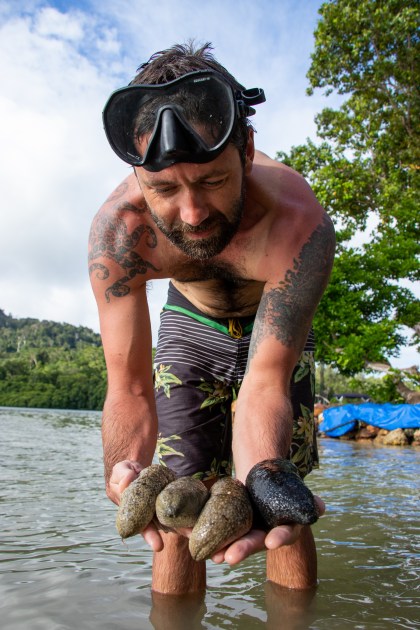
“They’re probably not a keystone species, but they have measurable effects on the health of the ecosystem around them and are likely instrumental in keeping things like algal blooms at bay,” says Waldie, as the sea cucumber squirts a jet of water out of its anus in protest. “From an ecosystem perspective they’re far more important than more charismatic species, like dolphins and whales, but for some reason they don’t get the same love.”
Back on shore, I watch a village woman perform the long, laborious process of curing a white teat. After harvest, the sea cucumbers are split from end to end, gutted, packed with salt, and left to cure in a plastic tub for a few days.
Now it’s time to boil them. The woman scoops out the salt grains, running her hands along the body cavity to remove any remaining traces of its intestine. After a gentle rinse, she places it in a pot of water boiling over an open fire.
Melanesian fishers have harvested sea cucumber for several centuries to sell to Asian markets, where they are considered a high-status delicacy. But demand is escalating rapidly as the Chinese middle class increases in size and wealth, leading to severe overfishing of dozens of species across the world.
“When I was little the shallows were full of white teat, like what we saw in the deep areas,” says Pochalau Tokios, one of the Mbuke fishermen. “But now they are gone.”
When I was little the shallows were full of white teat… but now they are gone.
Pochalau Tokios
Of the 26 species harvested in Papua New Guinea, two are especially valuable: white teat and sandfish. If processed and dried well, the single large white teat boiling away in the pot in front of us will sell for about $40 USD to a buyer in Lorengau, and eventually retail for as much as $200 from one of the many dried seafood vendors in Hong Kong’s Sheung Wan neighborhood. The other species, sandfish, sells for $90 USD locally and retails for as much as $500 at the final sale.
Prices rise as the population dwindles, motivating fishermen to harvest more and more. In 2009, Papua New Guinea’s fishery collapsed, forcing a nationwide ban on fishing for all sea cucumber species. One year stretched into two, and then three, and still the population didn’t recover.
“The fishermen actually overfished both the adult breeding stock as well as the juveniles,” says Manuai Matawai, TNC’s lead conservation practitioner in Manus. “Without any breeding adults left, it took seven years for the remaining juveniles to mature and reproduce.”

By 2017, the population recovered enough that the government reopened the fishery, this time with a new management plan. Each province had a limit on how much they could harvest, and they incorporated size restrictions to ensure adults had a chance to breed before being fished.
It was a good plan — in theory. But as provinces neared their quota, fishery officials were slow to spread the word to stop fishing. With many communities beyond the reach of cell service, information typically travels by word of mouth, taking weeks to reach every village. By the time the last sea cucumbers were pulled from the water and processed, many provinces exceeded their quotas by 100 percent, including Manus.
“On top of that, the exports weren’t checked to see if they met the size limits,” says Waldie. In 2017, 50 percent of the sea cucumber harvest in Fiji was undersized, and Waldie says it’s fair to assume that the number could be similarly high for Papua New Guinea.
As the white teat cooks, its body contracts down into a small, oblong brick. After this quick initial boil, the sea cucumber will be left out to dry, either in the sun or in a hot air dryer built with corrugated iron and an old oil drum. It will take a further two cycles of boiling and drying until it’s ready for sale.
Despite the wealth of white teat we saw in the protected area, fishing during the 2018 season is slow, possibly due to overharvesting last year. Walking around the village, many household drying racks contain just a few white teat each. “We average only two white teat a day, and for sandfish maybe one per day,” says Tokios. “It’s very hard.”
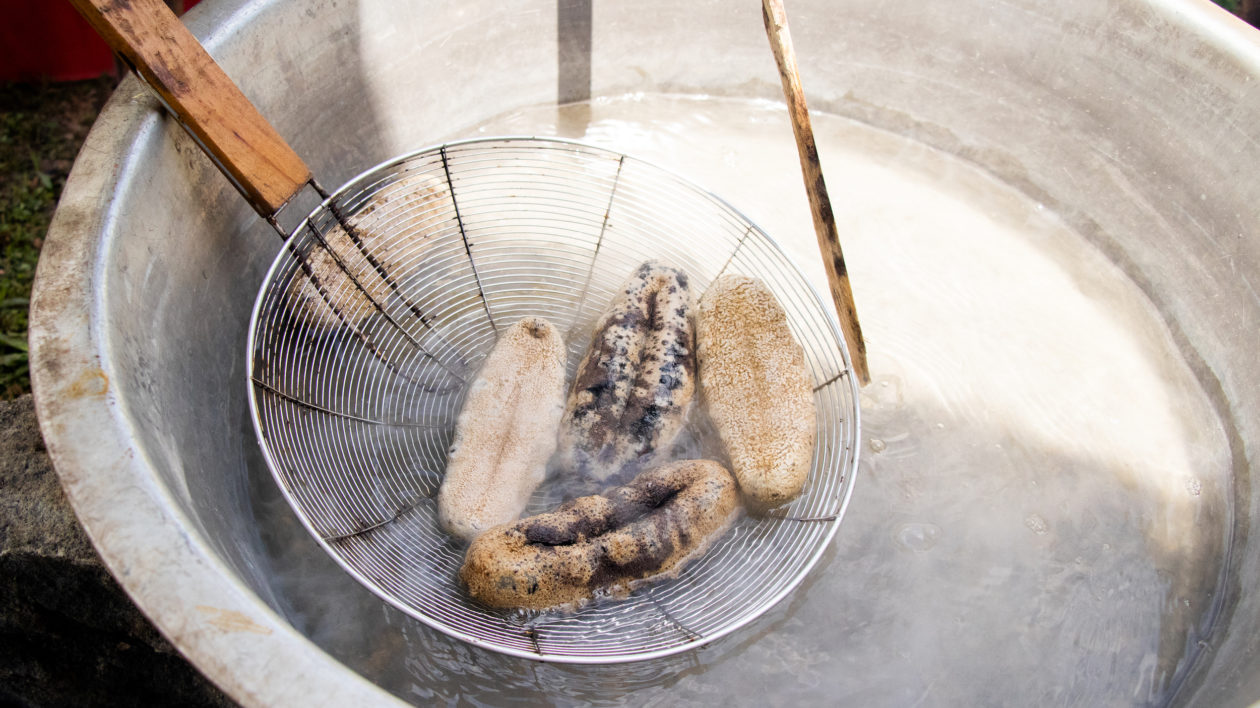
Gold Bars of the Sea
As sea cucumber populations decline, the economic consequences are even more severe than the ecological. “It cannot be overstated how important sea cucumbers are for livelihoods in rural areas,” says Waldie. “They’re like gold bars in the sea.”
Money from sea cucumber fisheries provides an incredibly important source of cash income for rural Melanesians, and that profit is often spent meeting basic needs. Walking through Mbuke village, Matawai points to a partially finished house, built of corrugated iron and bush timber. He tells me that the house has stood unfinished (but still occupied) for more than eight years, because the owner couldn’t afford to continue construction while the fishery was closed.
“We depend almost entirely on the sea for our food and income, because we don’t have enough land to help with gardening,” says Hilarn Bernard, a resident of Mbuke. She says that sea cucumber profits send village children to school and pay for new boats or motors to aid subsistence fishing. Another family in the community used last year’s fishing profits to purchase a rainwater tank to ensure a steady supply of clean water.
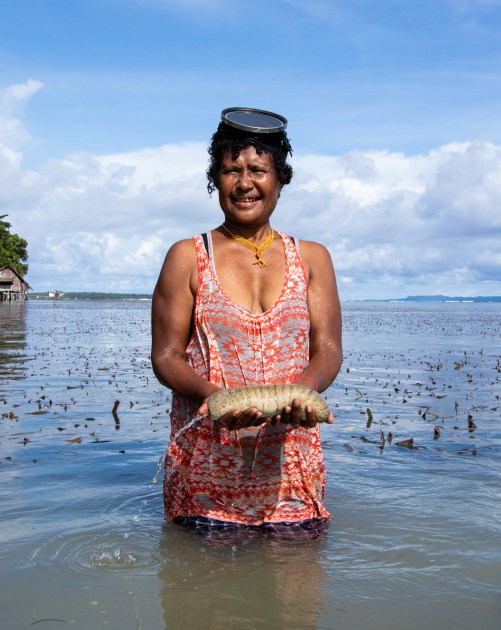
Sea cucumbers are so critical to the local economy that all else grinds to a halt during the fishing season. Every drop of petrol goes towards harvesting them, often at the expense of fishing tuna or other food species to supply village markets. The capital city of Lorengau frequently experiences day-long or even week-long power blackouts when container ships can’t re-supply fuel fast enough. Supermarket shelves lay empty for weeks after families, flush with extra cash for the first time in months, stock up on tinned meats, rice, and beer.
“The reality of doing conservation work here is that you can create the best, science-based management plan in the world,” says Waldie, “but if people don’t have enough food, or money to buy clothes and send their children to school, you will never convince them to obey management rules.”
With so much at stake, TNC and MENAR attempting to link conservation to livelihoods with a pilot program that could safeguard sea cucumber populations and generate additional income for communities.
With TNC’s advice, MENAR established multiple protected areas where sea cucumber fishing is strictly prohibited. “The idea is to have a network of spawning stocks that will help replenish the population no matter what happens outside of their seascape,” says Waldie.
Trained community monitors surveyed the sandfish protected areas before and after the 2017 season to monitor the population. They also surveyed sandfish habitat in two communities outside of the MENAR network as comparison sites.
“We saw a big difference,” says Elliott Tovaboda, a fisheries scientist at TNC. “The MENAR sites had higher densities both before and after the fishery season.” Some poaching did occur, but Tovaboda says that the sandfish populations within the protected areas were still very healthy.
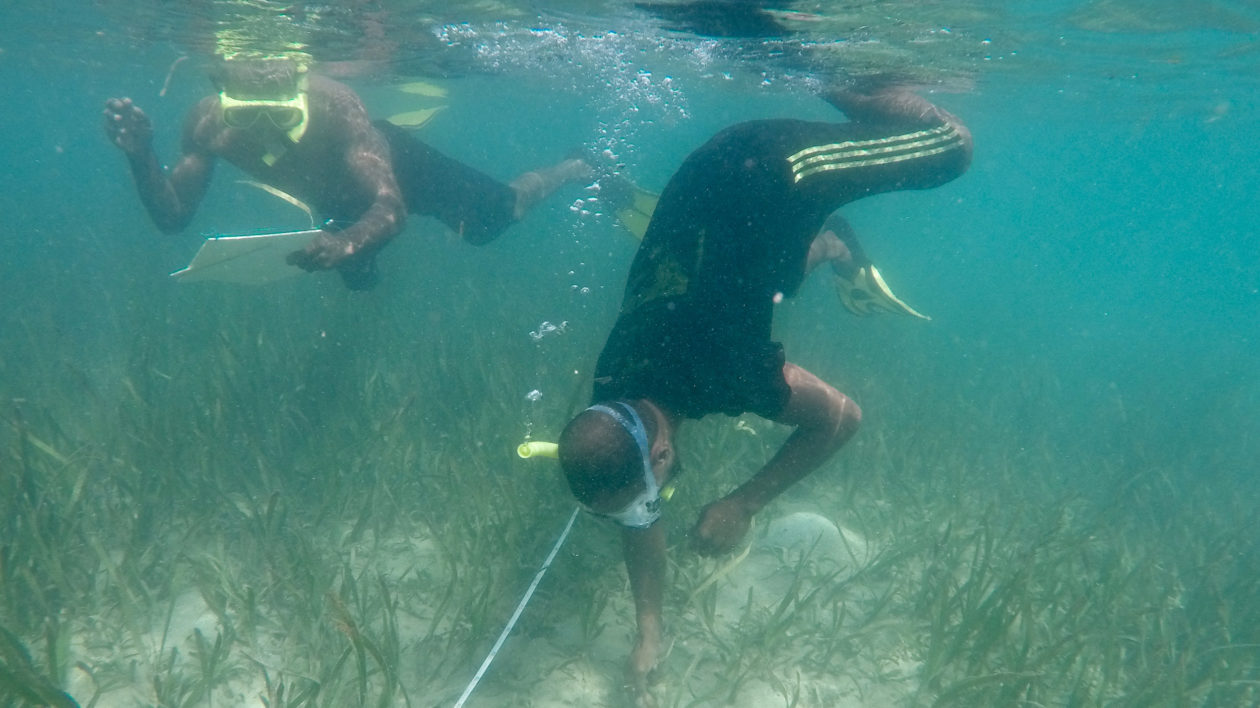
MENAR’s biggest innovation lies in streamlining the supply chain for beche-de-mer, as the dried sea cucumber product is called. Typically, beche-de-mer is sold by fishers to a foreign-owned export company, who then sells to an import company in cities like Singapore or Hong Kong. The import company sells to a wholesaler, who then sells the product to a network of seafood vendors, who finally sell to the consumer. Prices increase at each step of the supply chain, and most of the profits leave Papua New Guinea.
With financial support from TNC, MENAR established a business co-op and secured their own export license. “It’s the first cooperative venture in the country that harvests, processes, and exports their own beche-de-mer,” says Matawai.
The co-op purchases dried sea cucumber from community members in Lorengau, paying fishers the highest price of any exporter. Before sale, they measure each piece to ensure it complies with the size limits laid out in the management plan, which allows the animals have a year or two to breed before being fished.
“Their value also increases exponentially as they get larger, so you make a lot more money if you leave them in the water until they’re mature,” says Waldie. Matawai adds that resource-strapped Fisheries Authority doesn’t have the capacity to properly enforce the national management plan, and they see MENAR as a potential model for decentralizing enforcement to the local level.
TNC also helped MENAR obtain a sustainability certification from the World Wildlife Fund’s Asia-Pacific Sustainable Seafood and Trade Network, which provides access to a network of wholesalers willing to pay premium prices for sustainable seafood. The co-op now sells directly to a wholesaler in Hong Kong, and in 2017 members earnt about 150 percent more cash than they would selling to a traditional buyer.
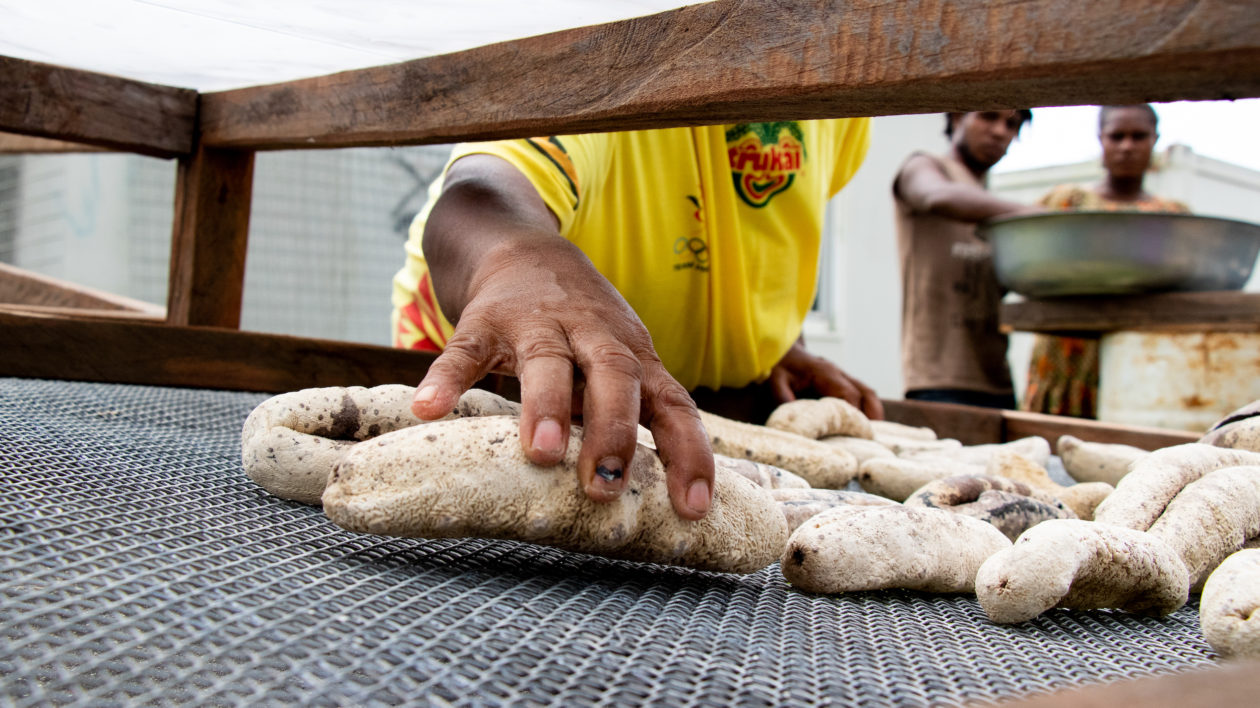
Two years into the experiment, the results are mixed. After paying its fishers and accounting for all costs, the MENAR co-op made an encouraging profit in 2017. But the following year they didn’t break even. Production costs increased, and the co-op faced greater competition from other buyers in Lorengau. And unintentional overfishing across Manus in 2017 — exacerbated by the government’s slow closure of the fishery — lowered stocks for the 2018 season.
Papua New Guinea has yet to announce if the national fishery will open again in 2019. Despite the uncertainty, the past two years provided valuable experience for both TNC and MENAR. This model — where tribal groups manage, sustainably harvest, and export their high-value marine products to the global market — is something of a holy grail for conservationists. It’s alluring, but difficult to achieve.
Waldie says that finding the right balance to successfully generate income and incentivize natural resource management is extremely tricky, and so far TNC and MENAR have made significant headway in achieving that balance.
And, despite the challenges, it’s the only way forward.
“In places where people’s lives are so deeply entwined with the natural environment,” says Waldie, “you can’t work toward conservation in a vacuum if you want lasting success.”
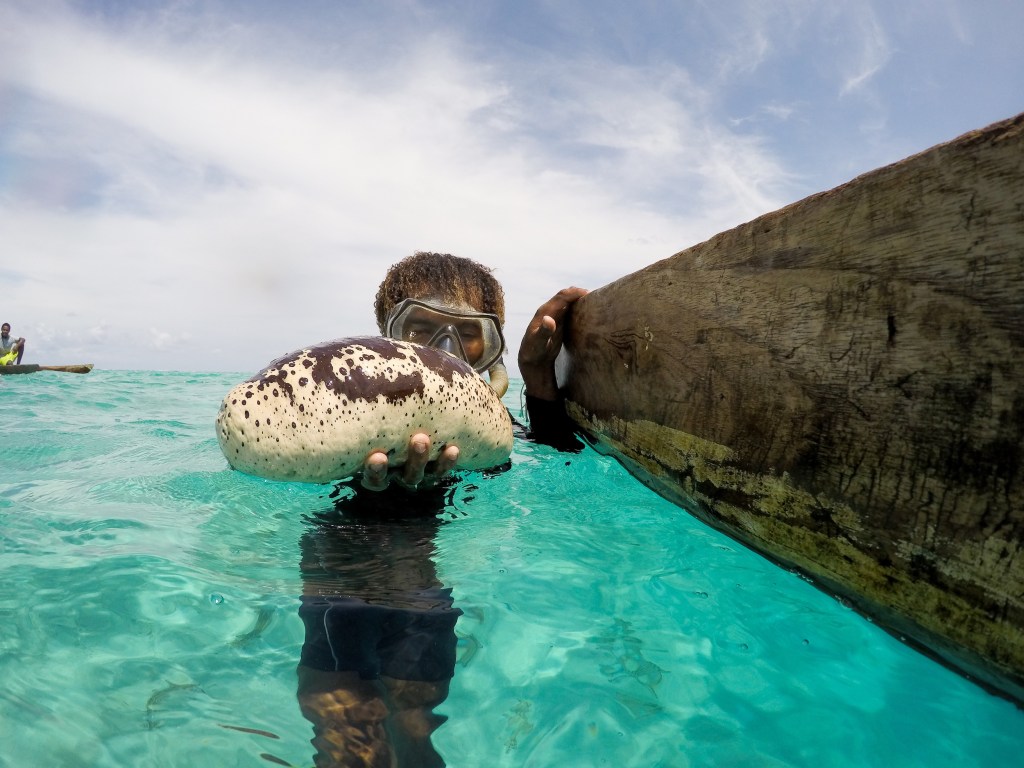



I knew next to nothing about sea sponges and would never have guessed they were so valuable!
I like people who gave time in helping people’s resources and communities.
God bless Cool Green Science.